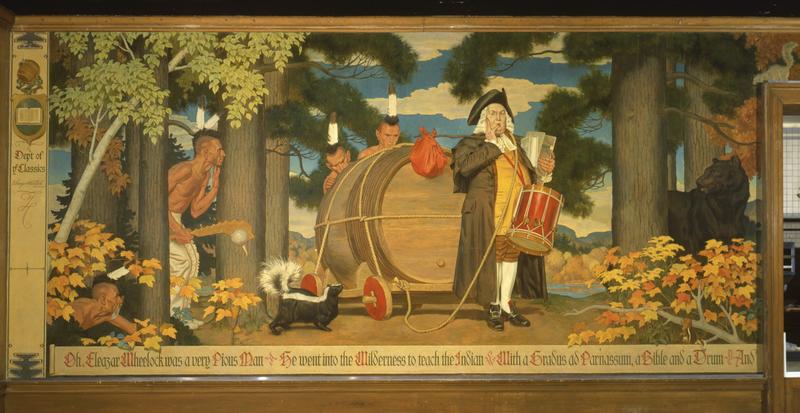
However, it was only under President Ernest Martins Hopkins, class of 1900, that Dartmouth’s collections were organized more systematically. The commissioning of the Baker Library and its subsidiary buildings, Carpenter and Sanborn, provided space for the collections to be organized. Carpenter Hall (completed in 1928–29), then solely the domain of the art history department, formed the axis mundi of the collections; the topmost floor featured galleries with large skylights and high ceilings to facilitate the exhibition and lighting of sculptures and paintings. Rare books were relegated to a specially constructed room at Baker. The architect of Carpenter Hall, Jens Frederick Larson, believed in a stringent but unique form of American neoclassicism that drew from Greco-Roman styles and orders of architecture, the forces of Georgian revivalism, and American history to create a building that reflected the noble simplicity and quiet grandeur that one would learn to expect from a college. The anthropology and natural science collections continued to be housed in Wilson Hall once the books were moved to Baker.
…
Within a decade of its physical establishment, the Hood held pieces from significant artists, from the reputed and renowned Old Masters like Rembrandt to the so-called New Masters like supposed artist and well-known chronic abuser of paint and canvas Jackson Pollock. Roy Lichtenstein, known for his ability to photocopy comic books in an ungainly large format and sell it as art at the Leo Castelli Gallery, gifted Richard Serra’s alleged “minimalist masterpiece”, a variant of which collapsed upon an installer at the Walker Art Center in Minneapolis, killing the installer; the gift now lies in the walled-off courtyard behind the Warner Bentley bust.
Published in the Dartmouth Review’s edition commemorating the reopening of the Hood after an extensive remodelling and expansion. Read the piece here.


